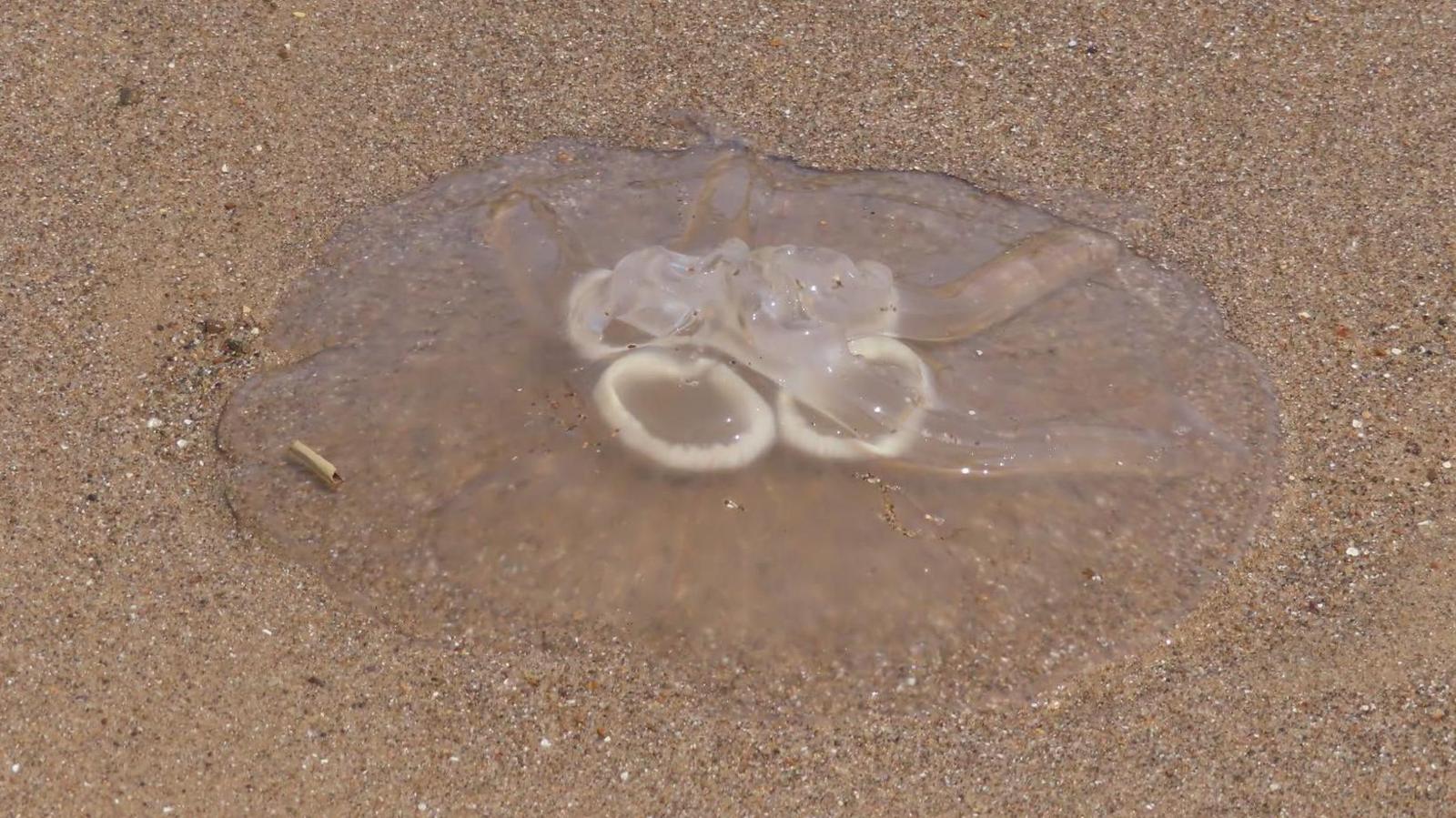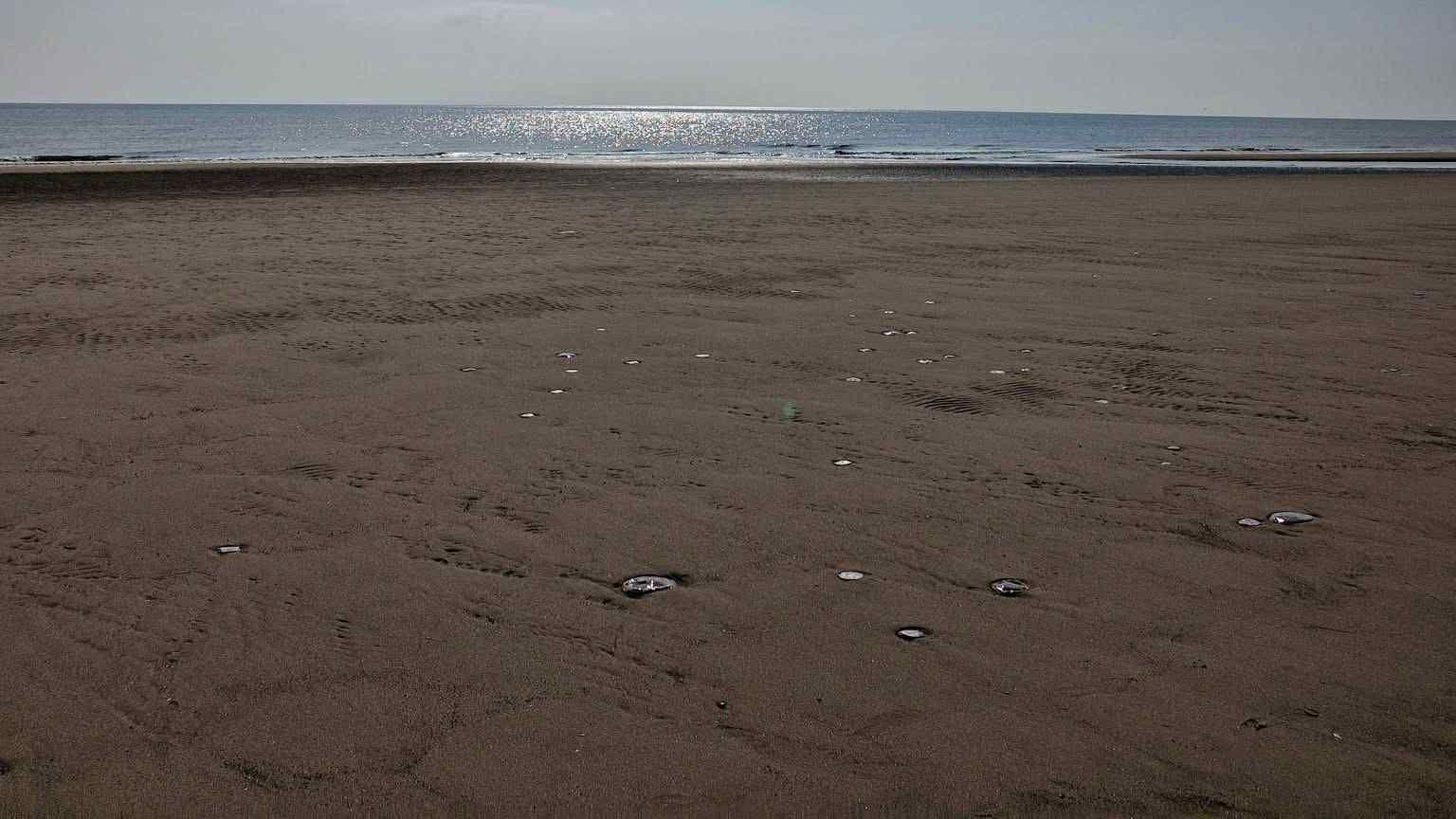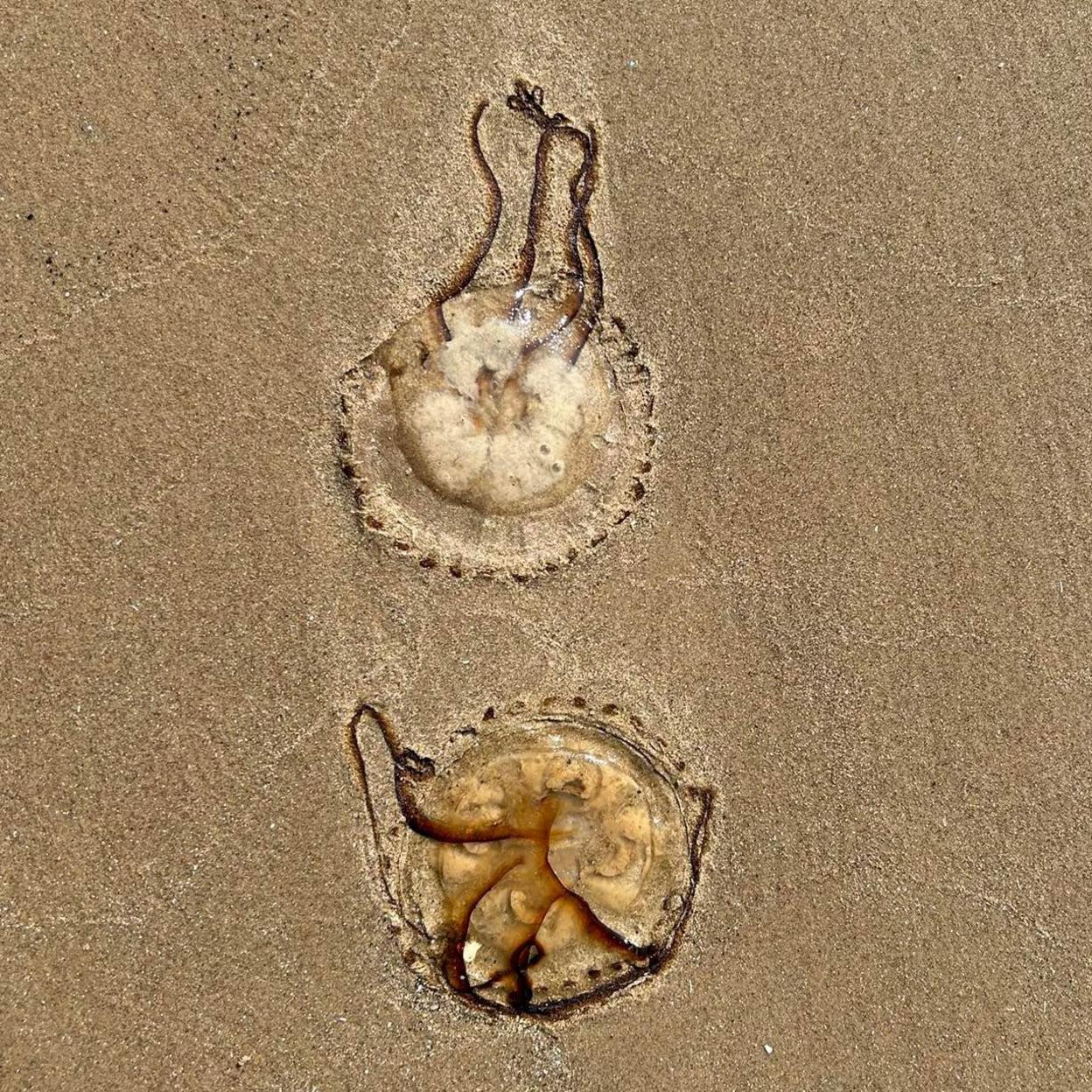Why is Lincolnshire seeing so many jellyfish?

Moon jellyfish are among the types that have been spotted along the Lincolnshire coast
- Published
A marine expert has explained why masses of jellyfish are washing up on Lincolnshire beaches.
Sutton on Sea Beachcare, a litter-picking team, said there had been numerous sightings of blue, moon and compass jellyfish from Mablethorpe to Skegness in recent days.
Alexandra Bulgakova, a data analyst at the Marine Conservation Society, said "warm waters and abundant food" can lead to a population increase, with onshore winds washing them up.
The group has asked for jellyfish sightings to be reported to them to help with its research.

Several jellyfish have been spotted by walkers over the past week
Lianne Havell, who runs Sutton on Sea Beachcare, which is run by Keep Britain Tidy and Anglian Water, said she had seen a "real influx" of jellyfish along the coastline over the past week.
She said people had reported sightings in Huttoft, Saltfleet, Mablethorpe and Sutton on Sea.
"There have been hundreds, literally hundreds," said Ms Havell.
"It's more unusual to see the blue ones, we don't see them that often.

Compass jellyfish were spotted at Mablethorpe's North beach on Wednesday
Ms Bulgakova added: "Large jellyfish strandings like this one in Lincolnshire happen most years, though their timing and location vary.
"Warm waters and abundant food can lead to jellyfish blooms, and if combined with onshore winds, they can find themselves stranded on the shore."
Ms Bulgakova said jellyfish are "key indicators of ocean change" and reporting sightings helps to monitor ocean health and support research about "our changing seas".
She also advised people to observe jellyfish from a distance.
Listen to highlights from Lincolnshire on BBC Sounds, watch the latest episode of Look North or tell us about a story you think we should be covering here, external.
Related internet stories
- Published19 June

- Published6 January

- Published12 June
